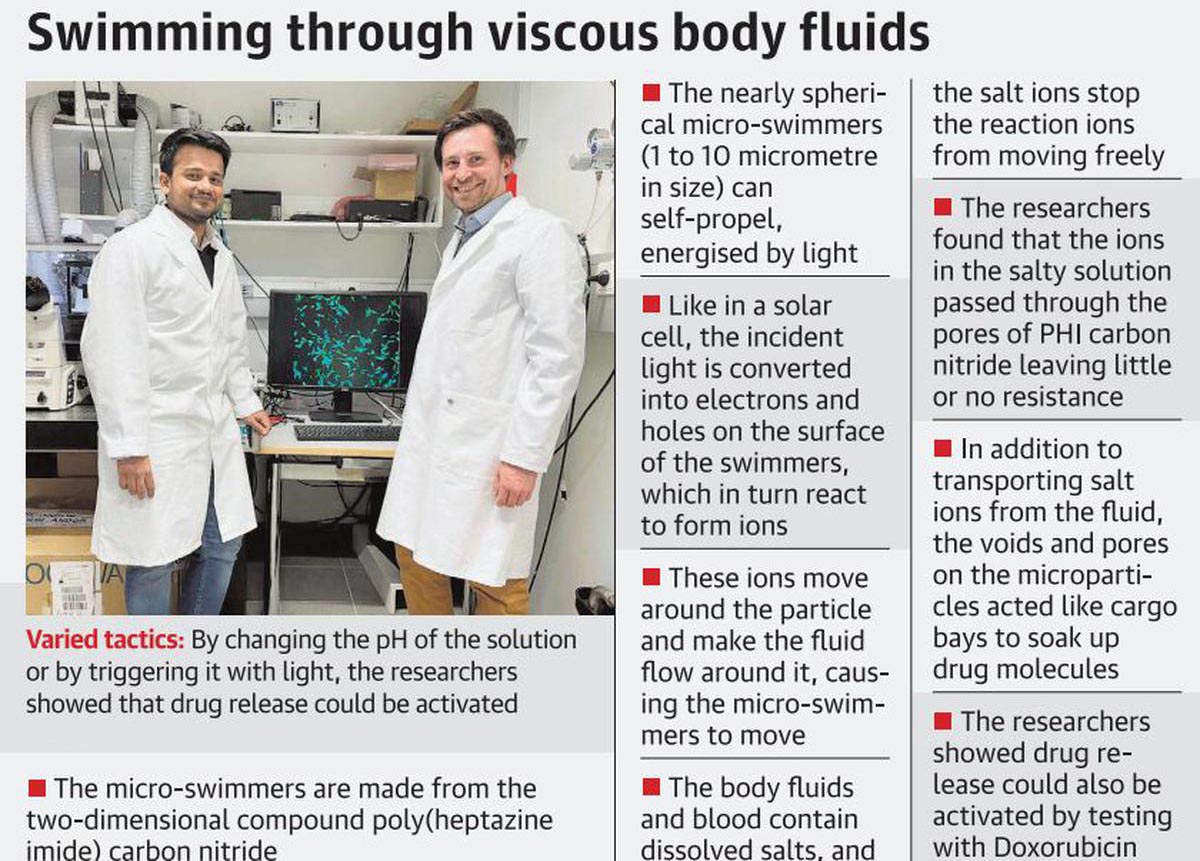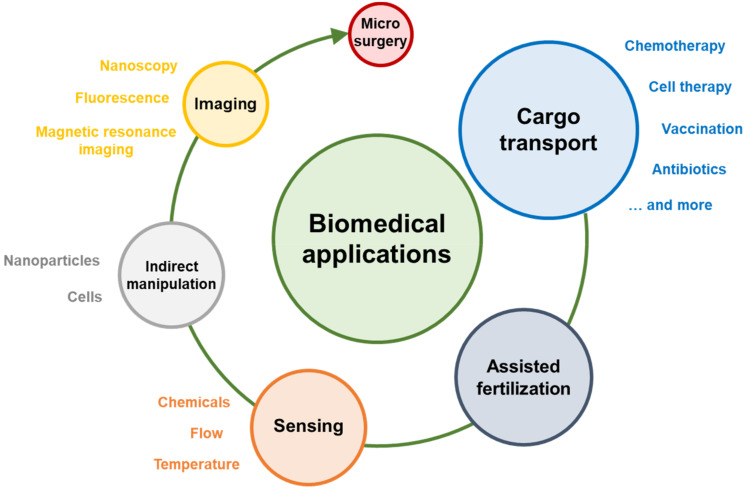Science & Technology
Micro Swimmers for Drug Delivery
- 12 Apr 2022
- 5 min read
For Prelims: Microswimmers, photocatalytic, PHI carbon nitride.
For Mains: Drug delivery, Robotics.
Why in News?
Recently, research has shown that it is possible to use light as a fuel to move microbots in real-body conditions with intelligent drug-delivery that is selectively sensitive to cancer cells.
- These microbots are referred to as microswimmers.
- The research is led by Max Planck Institute for Intelligent Systems (MPI-IS) and Max Planck Institute for Solid State Research (MPI-FKF), Stuttgart, Germany.
What are the Key Points of the Research?
- About: These microbots are made from the two-dimensional compound poly (heptazine imide) carbon nitride (i.e. PHI carbon nitride).
- These microbots are like miniaturised humans.
- They range from 1-10 micrometre (a micrometre is one-millionth of a metre) in size, and can self-propel when energised by shining light.
- How Microbots Swim: The PHI carbon nitride microparticles are photocatalytic.
- The particles are nearly spherical, and the incident light illuminates one-half of the sphere, leaving the other dark.
- As photocatalysis is light-driven, it occurs only on the brightened hemisphere.
- As the ions move from the bright side to the dark side, micro-swimmers march towards the direction of the light source.
- This reaction, combined with the particle's electric field, makes the microbots (micro-swimmers) swim.
- Existing Barriers: The body fluids and blood contain dissolved salts.
- When salts are present, the salt ions stop the reaction ions from moving freely as they will just bind or recombine with them and stop them.
- So all the chemically propelled swimmers can't swim in solutions containing salts.
- For example, when dissolved in water, common salt (NaCl) breaks up into sodium (Na +) and chloride (Cl -) ions.
- These ions will neutralise the ions created by the photocatalytic reaction, thereby impeding the self-propulsion.
- Contribution of Research: The researchers found that the ions in the salty solution passed through the pores of PHI carbon nitride. Thus, there was little or no resistance from the salt ions.
- In addition to transporting salt ions from the fluid, the voids and pores on the microparticles worked as cargo bays and could soak up large amounts of drug.
- Microswimmers for drug delivery introduced in the past relied on 'artificial capsules," which were meant to be filled with drugs and delivered to specific locations in the body.
- Creating these capsules, however, could be both complex and expensive. In contrast, the particles used by the researchers are cheap, organic, and spongy by design, binding directly to drugs or other substances.
- This means that they could be easier to implement on a large-scale. Remarkably, they can also be loaded with more drugs (i.e., 185% of their own mass) than other materials used in the past.
- Significance: Microswimmers could allow doctors to deliver drugs to targeted regions inside the human body.
- The microswimmers could also help to introduce specific substances in lakes or in the ocean.
- For instance, the swimmers could be deployed in endangered natural environments to heal specific animal species or exterminate harmful organisms.
UPSC Civil Services Examination Previous Year Questions (PYQs)
Q. With reference to the use of nanotechnology in health sector, which of the following statements is/are correct? (2015)
- Targeted drug delivery is made possible by nanotechnology.
- Nanotechnology can largely contribute to gene therapy.
Select the correct answer using the code given below:
(a) 1 only
(b) 2 only
(c) Both 1 and 2
(d) Neither 1 nor 2
Ans: (c)
- Nanotechnology is the study and use of structures between 1 nm ( i.e., nanometer) and 100 nm in size.
- Nanotechnology in the health sector can be used for targeted drug delivery as well as it can also help in gene therapy.
- Gene therapy uses genes to treat or prevent a disease. It allows the doctors to treat a disorder by inserting a gene into the patient’s cells instead of using drugs or surgery.








